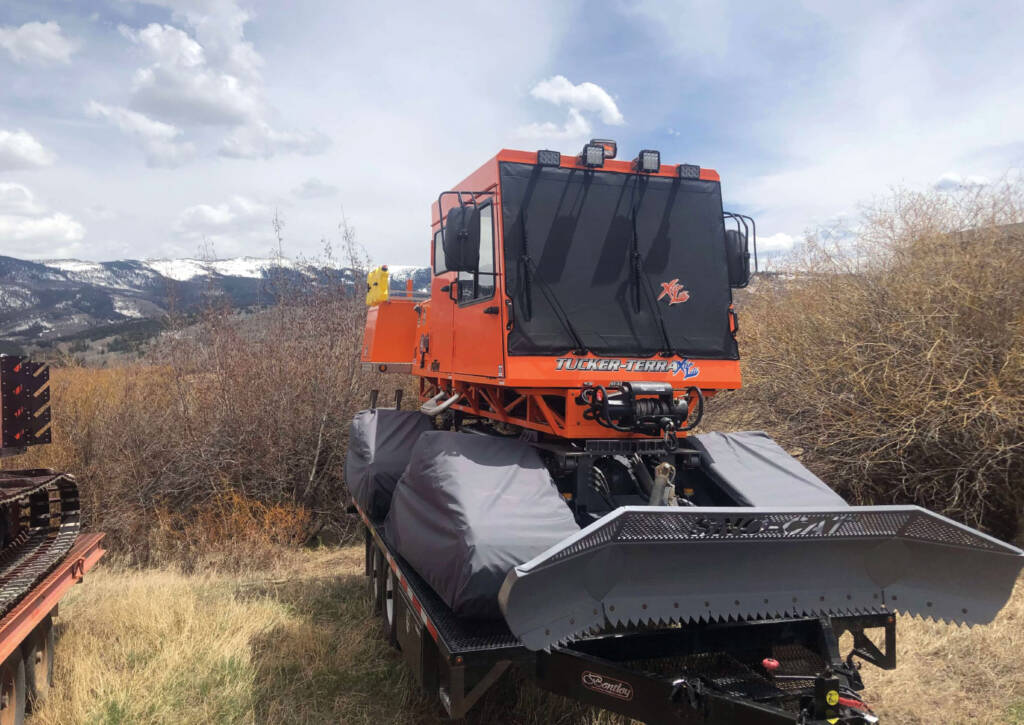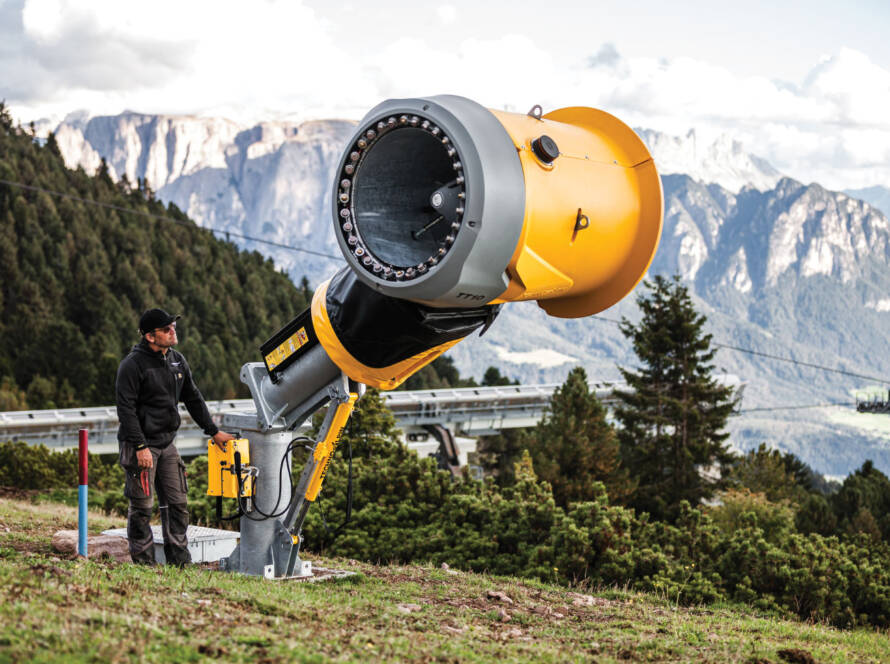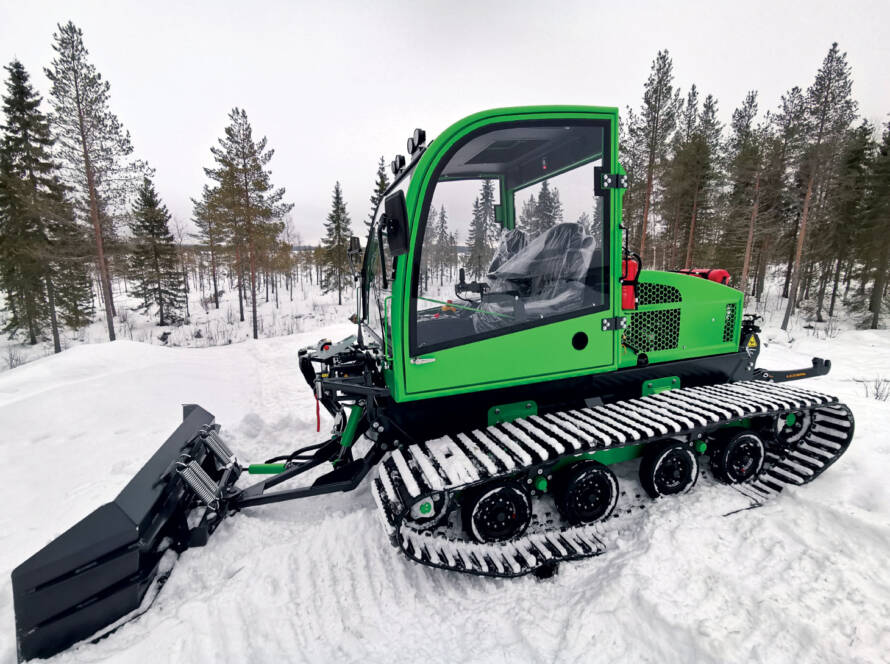Regardless of the job, all of these snowcats have one thing in common: they need to be maintained and stored safely. With such a large, heavy-duty vehicle, it can be difficult to decide where to put it, how to cover it and how to store it.
Inside or out?
Most will advise that snowcats should be stored indoors. Inclement weather, UV rays, pests and other factors can be brutal on the vehicle’s engine, tracks and structure, making it crucial to store the snowcat properly. However, parking a snowcat inside can sometimes be tricky. More often than not, owners use their vehicles daily and don’t have the space at home to store their vehicles, but also can’t make a daily trip back and forth to a warehouse.
There are a few advantages to keeping a snowcat outside. The ease of access makes a good case, especially during peak winter months when it’s being used frequently. Further, using a snowcat every day means it receives near-daily checkups. If there is snow accumulation, for example, it won’t be sitting there for too long.
Not everyone lives near a storage facility or has the means to transport an enormous vehicle like a snowcat. In instances like these, finding alternative methods to protect the snowcat is crucial. One great alternative to indoor storage is using a high-quality cover made for the vehicle. Companies like Equip, Inc., create custom-fit, weather-resistant covers for entire snowcats or even just the tracks.
However, if a snowcat isn’t properly stored, some issues could arise.
One of the most common issues occurs when a snowcat’s tracks become frozen to the ground. This happens when the heat of the snowcat engine melts the snow beneath the machine. When the water refreezes after the vehicle has cooled, it effectively cements the snowcat in place. Often, people will suggest parking on top of pallets, tarps or other items that might prevent the snowcat from coming into direct contact with the snow below it. Alternatively, custom track covers can also help.

Another issue arises if there is heavy snowfall. Leaving a snowcat uncovered and unprotected can lead to structural damage from weighty snow buildup, shortening the lifespan of the vehicle. Parking indoors can help prevent any damage caused by other inclement weather such as hail, sleet or ice.
There is also the issue of wildlife outdoors. Leaving a vehicle unattended outside can attract animals and insects. The inside of a snowcat’s cab might be warmer than the outside of it, making it an inviting shelter for rats, raccoons, cockroaches, earwigs and other pests.
Storage options for snowcats
Many of the issues described above can be prevented by storing a snowcat inside of a garage, warehouse, barn or other structure. With a roof and walls, weather issues are minimized. There is no need to plan for heavy snow or tracks freezing to the ground.
Often, areas that have skiing and other winter sports will also have places to store snowcats. In Colorado, for example, there are several warehouses around the state where one can rent space to store a snowcat or similar vehicle.
At the end of the day, maintenance and protection come down to the snowcat owner. While storing a snowcat indoors is the safest bet, alternative methods for protecting the vehicle from weather, UV rays, pests and other issues are available. Owners can be creative with how they decide to store their vehicle, whether that means laying a couple of pallets in the yard and protecting the machine with a cover, or building an entire garage.
Ren Kurgis is a writer, designer and marketing manager for Equip, Inc., based in Colorado Springs, Colo. Kurgis has always been obsessively creative, writing their own stories from a young age, painting the walls of the house and getting into every art project they could. That passion led them to excel in all things creative: writing, designing, marketing. Nowadays, Kurgis enjoys helping others bring ideas to life through words and images. In their spare time, Kurgis can be found sketching, reading a fantasy novel or enjoying the outdoors with their husky and sphynx. Follow Kurgis on LinkedIn at www.linkedin.com/in/ren-kurgis/.


